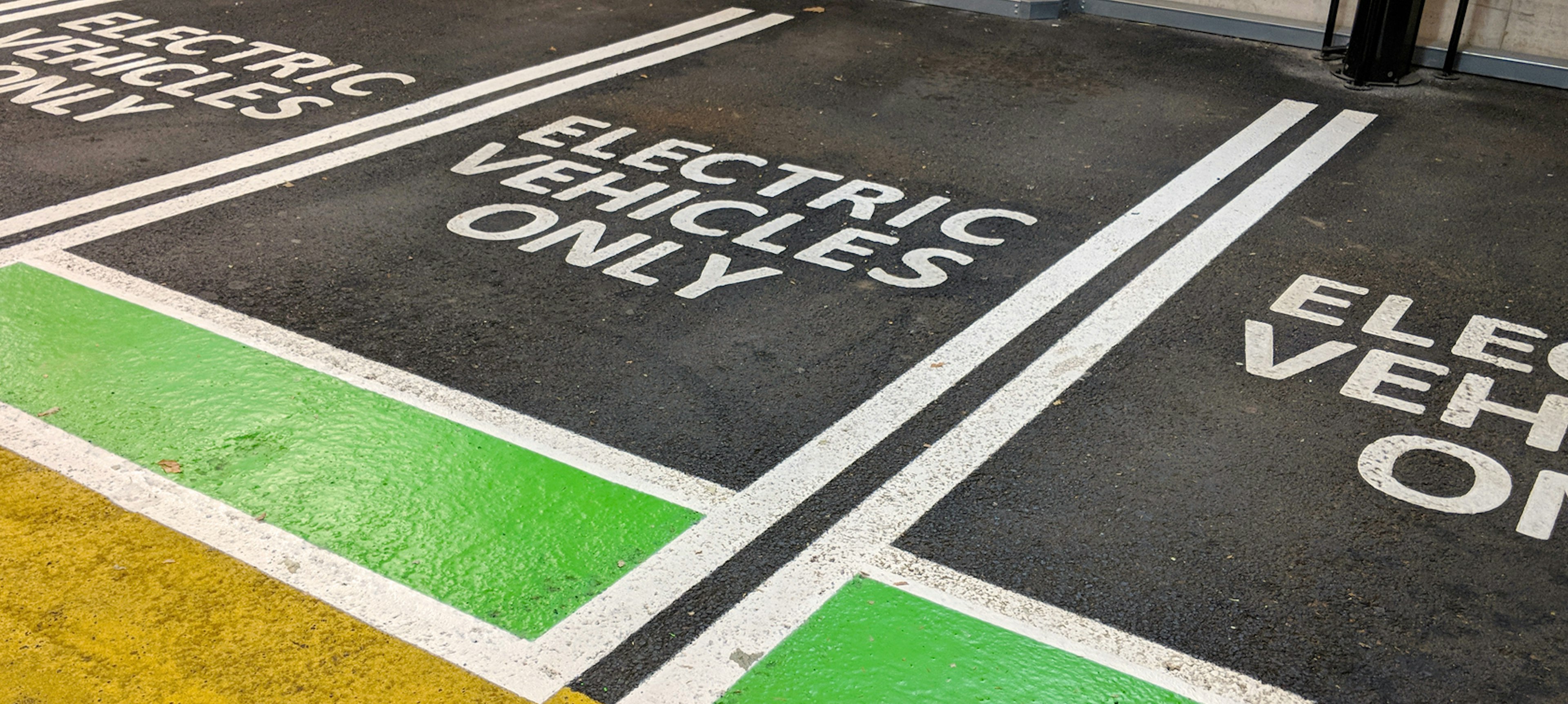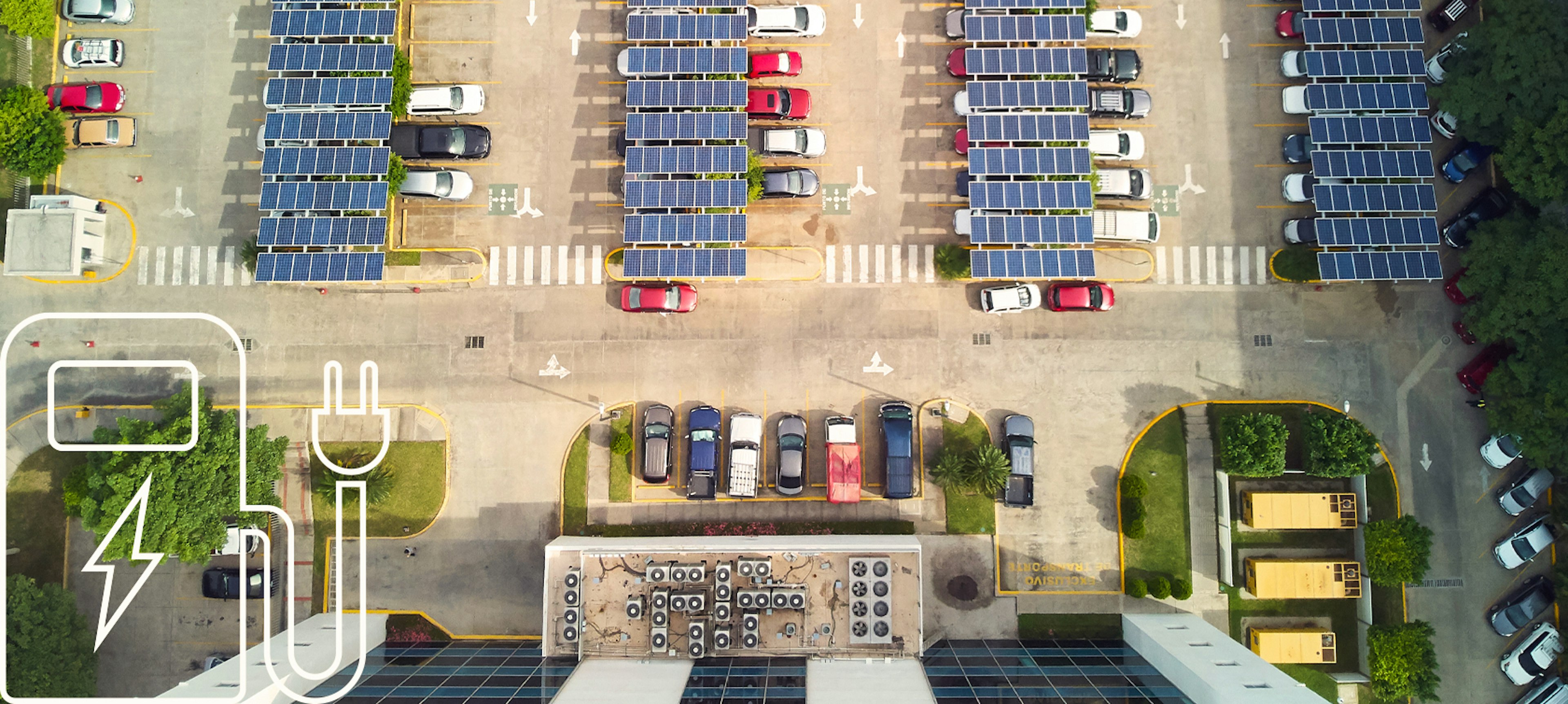Electric vehicles (EVs) aren’t going anywhere—quite the opposite, in fact. Sales of EVs exceeded 10 million in 2022; 2023 sales projections are estimated to hit 14 million by the end of the year. Meanwhile, recent reports indicate that the number of EVs on U.S. roads is projected to reach 26.4 million in 2030.
It’s no wonder why EVs are so popular—after all, they can help you save on fuel costs, lower routine maintenance, and gain a positive company image. However, there is still a lot of mystery surrounding the basics of EV fleets, which can be a barrier to adopting them. These frequently asked questions and their answers will help you feel more prepared to electrify your fleet.
EV Basics
1. What are the different types of EVs?
Electric vehicles are either partially or completely by electric power. Instead of using gas for power, electric vehicles are recharged. EVs encompass both hybrid electric vehicles (HEVs), plug-in hybrid electric vehicles (PHEVs), and battery electric vehicles (BEVs), as well as hydrogen fuel cell vehicles.
2. What are hybrid electric vehicles?
Hybrids have grown in popularity over the years, bridging the technology between gas-burning cars and fully electric ones. An HEV (also known as a conventional hybrid) uses a gasoline engine and regenerative braking to keep its smaller batteries charged. You don’t have to plug in a conventional hybrid to operate the vehicle.
Plug-in hybrids (PHEVs) typically have a gas engine and an electric motor powered by batteries. They’re similar to standard hybrids in that they use gas and electric power, but the difference in how they operate is key. The ability to charge batteries in advance helps PHEVs drive on pure electric power without burning any fuel.
3. What are battery electric vehicles?
Battery electric vehicles (BEVs), sometimes referred to as all-electric vehicles, have an electric motor instead of an internal combustion engine. These vehicles use large battery packs to power the electric motor and must be plugged in to a wall outlet or charging equipment to recharge their batteries.
4. What are hydrogen fuel cell vehicles?
Hydrogen fuel cell vehicles are a still-emerging technology, but many industry experts believe they show great promise for the future of EVs. Rather than drawing power from an energy grid like a plug-in hybrid or battery electric car, a fuel-cell vehicle converts gaseous hydrogen into electricity by using an on-board fuel cell.
5. How many electric vehicles are in the U.S.?
The short answer? A lot. The EV market in the United States broke records in 2022, estimated at just under 918,500 light electric vehicle sales. Sales of hybrid, plug-in hybrid, and battery-electric vehicles (BEV) in the United States rose to 17.7% of new light-duty vehicle sales in the third quarter of 2023. Meanwhile, there is sustained global interest in EVs, with 6 million new BEVs and PHEVs delivered during the first half of 2023.
6. What are some important acronyms to know about electric vehicles?
In addition to EV, BEV, HEV and PHEV (mentioned above), here are some other acronyms that can be helpful when discussing electric vehicles:
- ICE: Internal combustion engine, which is how conventional non-EV cars are powered.
- TCO: Total cost of ownership of a vehicle, which factors in depreciation, fuel and maintenance in addition to the price tag of a vehicle.
- AC vs. DC Charging: Alternating current vs. direct current, terms used to refer to types of EV charging. The difference between AC charging and DC charging is the location where the AC power gets converted (either inside or outside the car). Unlike AC chargers, a DC charger has the converter inside the charger itself. That means it can feed power directly to the car's battery and doesn't need an onboard charger to convert it. AC current (sometimes called level 2), charges more slowly than DC current (sometimes called level 3).
- MHEV: Mild hybrid electric vehicle. Also known as BAHV (battery-assisted hybrid vehicle). Your typical ICE vehicle with a small electric motor or system to improve start/stop performance.
- EVSP: Electric vehicle service provider. Providers manage and maintain the entire service aspect of EVs.
Charging
7. How long does it take to charge an electric vehicle?
Charging an EV can take as little as 30 minutes or as long as a full day. This depends entirely on the type of EV you have, the type of charging you are doing, and other factors such as current charge level and weather conditions. A typical electric car (60kWh battery) takes just under 8 hours to charge from empty-to-full with a 7kW charging point (but a more robust charger can cut this time down).
8. How much does it cost to charge an electric vehicle?
Like so many other aspects of owning an EV, the cost to charge will vary depending on the specific vehicle in question and where you decide to charge the vehicle. If you’re charging from a home charging station, the cost of charging an electric vehicle is based on the size of the battery and the cost of electricity. When you’re charging from a public charging station, you’ll either pay by the electricity cost or the time you spend at the station.
While the cost to charge an electric vehicle is variable, we’ll give a hypothetical based on typical in-garage charging. Conservatively, most electric vehicles can get 3 to 4 miles per kilowatt hours (kWh); if you drive 1,000 miles per month, that equates to about 330 kilowatt hours. Using the average U.S. household charging rate of 16 cents per kWh, you can expect to pay a little more than $53 a month to charge your EV.
9. How much does it cost to install a commercial EV charging Station?
The cost to install a commercial EV charging station can range from $1,500 — $50,000 depending on your property’s electrical infrastructure and the type of charging station you’ve selected. An older building, for example, may require 100+ feet of wiring, while another could run just 20 feet and therefore require fewer labor hours. On average, the cost to purchase equipment and install a commercial-grade AC charging station is around $6,000—but don’t forget about the other costs, like ongoing maintenance and software or network subscriptions.
Fleet Electrification
10. How can fleet owners prepare to add EVs to their fleet?
Fleet owners should offer some education to their drivers about EVs and what will go into operating one, because there is often more to consider than expected.
“There is so much missed currently by fleet operators when thinking about going electric,” says Mary Perry, Manager, Partner Products & Implementation at Mike Albert. “Something that fleet operators and human resource managers for companies need to think about is the overall EV ecosystem. It’s not just the vehicle, it’s the person driving it.”
Adding EVs to a fleet can be more complicated than one may expect. Things to consider include:
- Where will your drivers access charging?
- What recommendations can you give your drivers to ease range anxiety?
- What type of education can you provide within work hours for employees?
- What options are available for charging infrastructure on-site?
- How will you reimburse drivers for mileage in an EV?
11. Can fleet owners track electricity usage in EV fleets?
They sure can. At Mike Albert, we've introduced an EV card that works like a fuel card but instead gauges kilowatts of electricity used. This card offering boasts seamless charging at 66,000 charging stations nationwide.
12. How can fleet owners keep track of other EV metrics?
EV metrics offer the ability to include everything from fuel savings, manage vehicle maintenance, and fleet safety management. Geotab's Electric Vehicle Sustainability Assessment (EVSA) is the largest dataset for real-world EV performance, offering data-driven recommendations for a smooth transition to electric.
“The EVSA allows you to upload telematics data from any telematics vendor,” says Perry. “It will analyze the driving patterns, the estimated carbon reduction and even the financial impacts.
While creating an electric fleet can feel daunting, it is within reach — especially if you work with a fleet electrification partner to help with EV fleet management. Fleet electrification partners can assist you with acquiring necessary permits, addressing concerns from property owners, and handling capital costs of charging such as acquisition, installation, and upgrades.
For more information about the future of fleets, chat with fleet electrification expert Mike Albert today.
Skills covered in the class
Fleet Electrification
Vehicle Specification
Mobility-Mindset
Brand Image
Did you enjoy this class?
Share it with your organization and colleagues.
Sign up for our newsletter for the latest information about the fleet industry.
Sign up for our newsletter for the latest information about the fleet industry.



